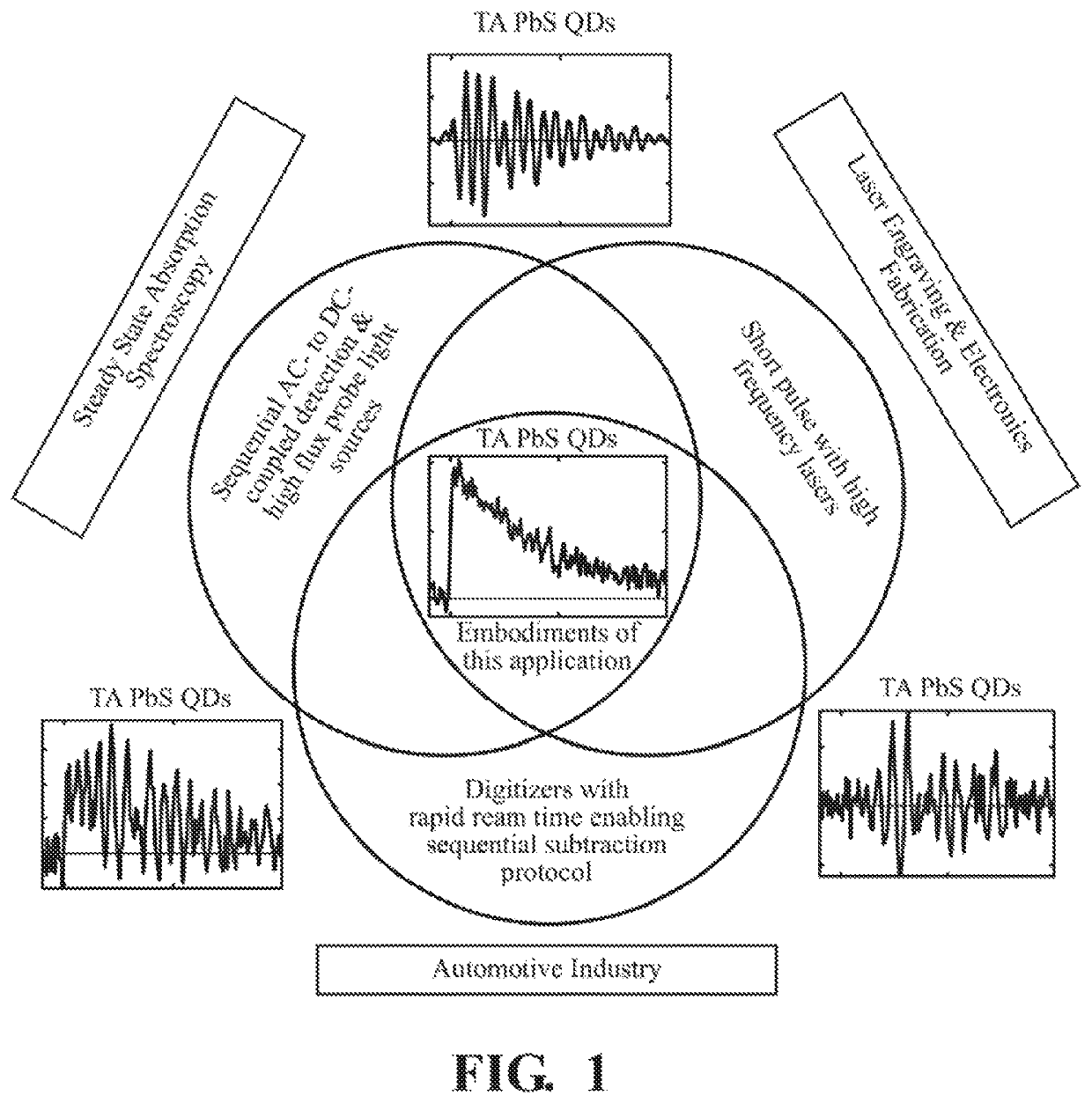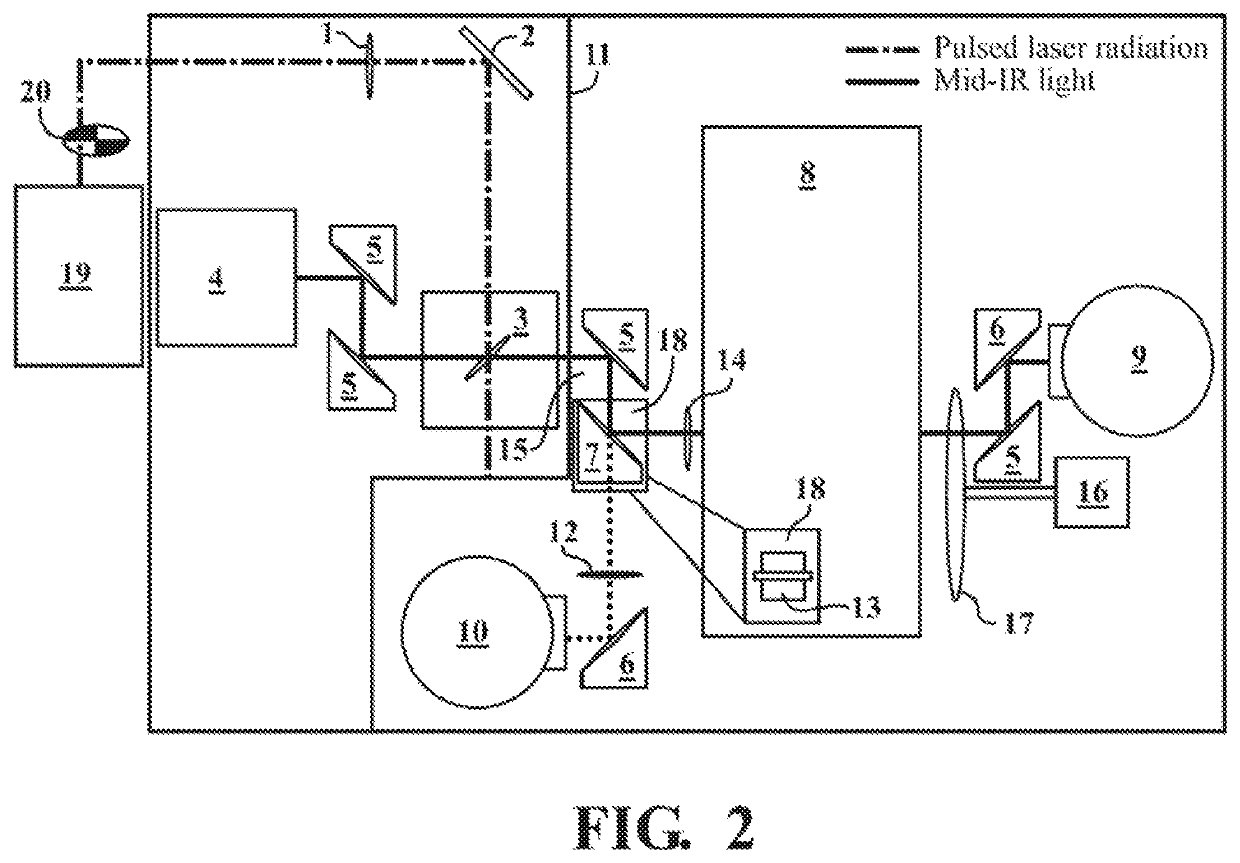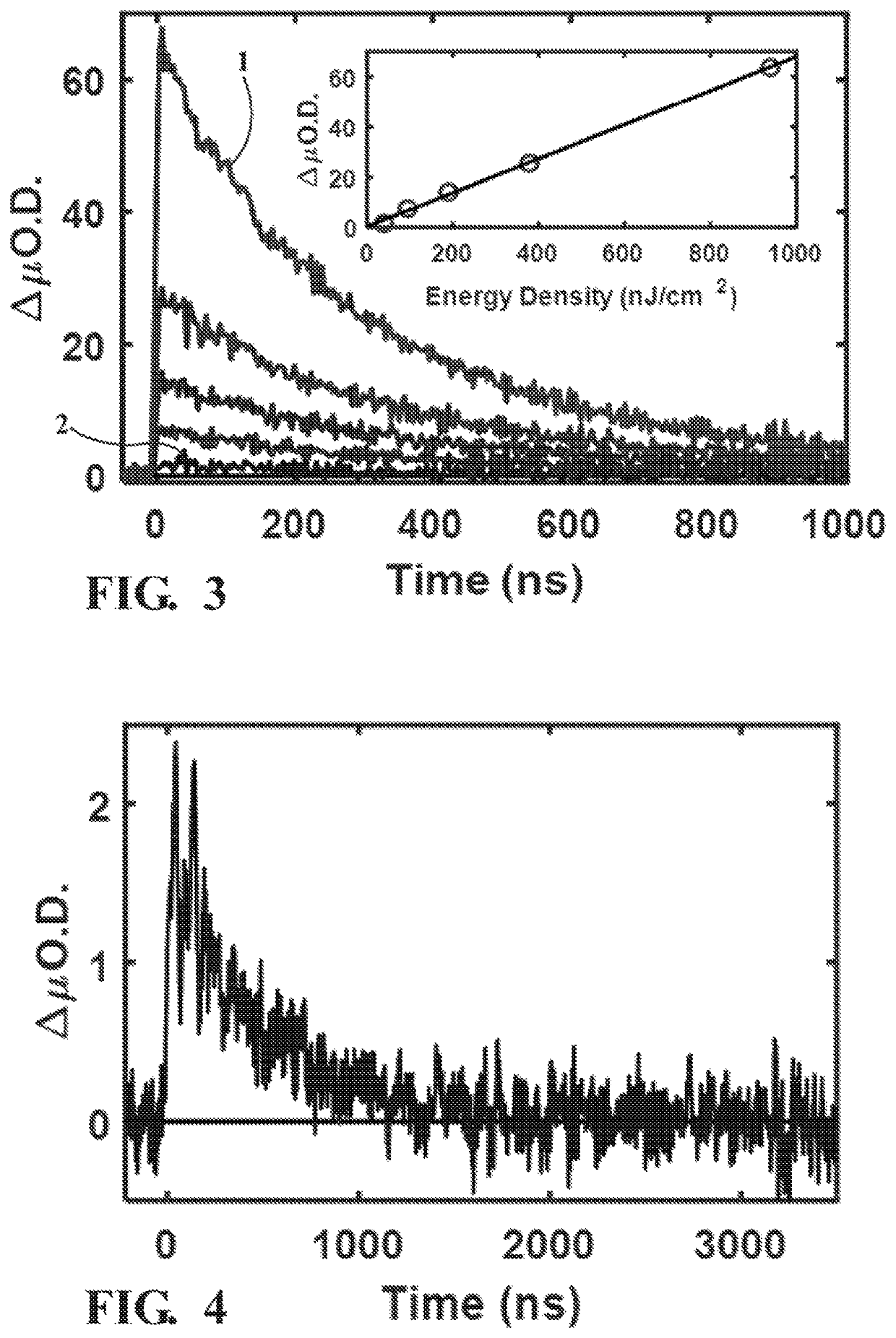Short pulsewidth high repetition rate nanosecond transient absorption spectrometer
a transient absorption and nanosecond technology, applied in the field of nanosecond mid-infrared, near-infrared, visible and ultraviolet transient absorption spectrometers, can solve the problems of inability to access information by current technology, widespread technology, and inability to achieve noise suppression strategies that are not available or severely limited to implementation, and the number of scans needed to improve s/n is severely limited
- Summary
- Abstract
- Description
- Claims
- Application Information
AI Technical Summary
Benefits of technology
Problems solved by technology
Method used
Image
Examples
Embodiment Construction
Overview
[0041]The present invention provides exceptional consolidation of three noise suppression strategies to generate unexpected and unparalleled S / N levels for any transient absorption spectrometer to date. A clear illustration of the three noise suppression techniques that were combined in the invention, along with representative data collected using different combinations of the techniques is shown in FIG. 1. The center plot demonstrates the significant improvement in signal-to-noise when all three technologies are merged in the correct manner. Note that all the collected data are transient absorption decays of PbS quantum dots (TA PbS QDs), and were collected under identical conditions other than eliminating the specified component from the instrument.
[0042]Contrary to prior thinking, the fusion of these three distinct noise management approaches does not result in an “additive-like” effect, in which the joining of two strategies produces some improvement and the addition of ...
PUM
| Property | Measurement | Unit |
|---|---|---|
| frequency | aaaaa | aaaaa |
| frequencies | aaaaa | aaaaa |
| frequencies | aaaaa | aaaaa |
Abstract
Description
Claims
Application Information
 Login to View More
Login to View More - R&D
- Intellectual Property
- Life Sciences
- Materials
- Tech Scout
- Unparalleled Data Quality
- Higher Quality Content
- 60% Fewer Hallucinations
Browse by: Latest US Patents, China's latest patents, Technical Efficacy Thesaurus, Application Domain, Technology Topic, Popular Technical Reports.
© 2025 PatSnap. All rights reserved.Legal|Privacy policy|Modern Slavery Act Transparency Statement|Sitemap|About US| Contact US: help@patsnap.com



